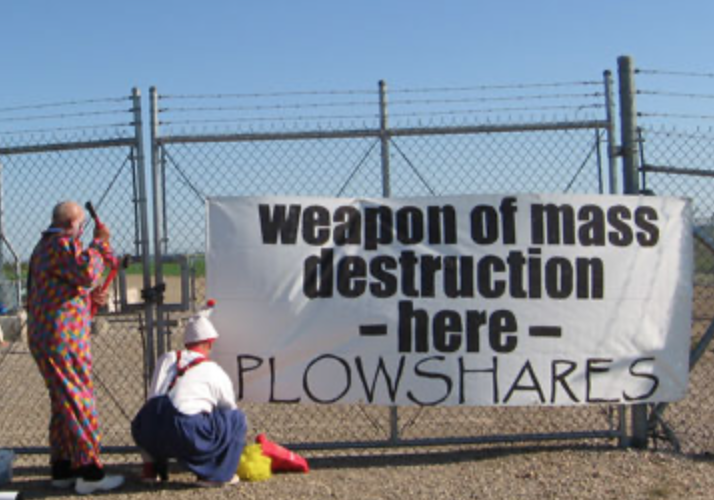
You can learn a lot about protest and civil disobedience by studying this history of religious movements in America and around the world. I did that in college and grad school.
I also learned quite a bit these topics while, as a reporter, hiking out into the vast expanses of northeastern Colorado in the mid 1980s with some Catholic peace activists who planned to stage a protest at the gate surrounding a set of nuclear missile silos. I saw one of the same nuns get arrest at an abortion facility.
At some point, of course, protesters face a choice — will they break the law. That sounds like a simple line in the legal sand, but it isn’t.
Here is what I remember from that experience long ago. I offer this imperfect and simple typology as a way of introducing another interesting set of statistics — in a chart, of course — from social scientist Ryan Burge of the ReligionInPublic blog, who is also a GetReligion contributor.
This particular set of numbers looks at various religious traditions and the degree to which these various believers say they obey laws, without exception. You can see how that might affect questions linked to protest, civil disobedience and even the use of violence in protests.
But back to the very high plains of Colorado. We discussed several different levels of protest.
* Protesters can, of course, apply for parade permits and, when they have received one, they can strictly cooperate with public officials.
* It is possible to hold protests in public places where assemblies of various kinds are legal — period.
* Then again, protesters can obstruct city streets for as long as possible and, when confronted by police, they can disburse without a major confrontation.
* Or not. At some point, protesters can peacefully violate a law and refuse to leave — whether that’s a major road crossing, the whites only rows of a city bus, the front gates of an abortion facility or the security zone outside a nuclear missile silo. Hanging protest banners — or similar actions — is another option here. In civil disobedience, protesters accept that they will be arrested.
* Or not. What if the protesters decide that take a crowbar and break the lock on the gate around the missile silo (or abortion facility) in order to enter the facility and paint slogans or some other form of symbolic (but minor) destruction of symbolic structures? What if they resist arrest?
* Finally, what if they cross the line from protest and into direct, violent confrontation with legal authorities or simply with store windows and doors, in order to do some looting? Is that protest?
Do you see how some of this relates — once again — to the protests and illegal actions surrounding news coverage of #BlackLivesMatter demonstrations and similar events? Do you see how religious beliefs and doctrines could affect some of these choices?
Watch the video at the top of this post, with the Rev. Martin Luther King, Jr., and then look at this chart from Burge, and his comments:
Always like questions that tap into view of authority.
I am kinda surprised that there aren’t bigger partisan splits on this one.
Note that Black Protestants are the most likely to obey the law. The religiously unaffiliated are the least likely – especially if they are Dems. pic.twitter.com/WRArUS9OLd
— Ryan Burge 📊 (@ryanburge) June 11, 2020










